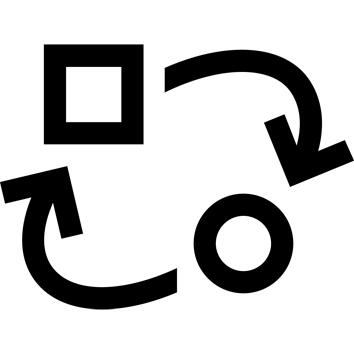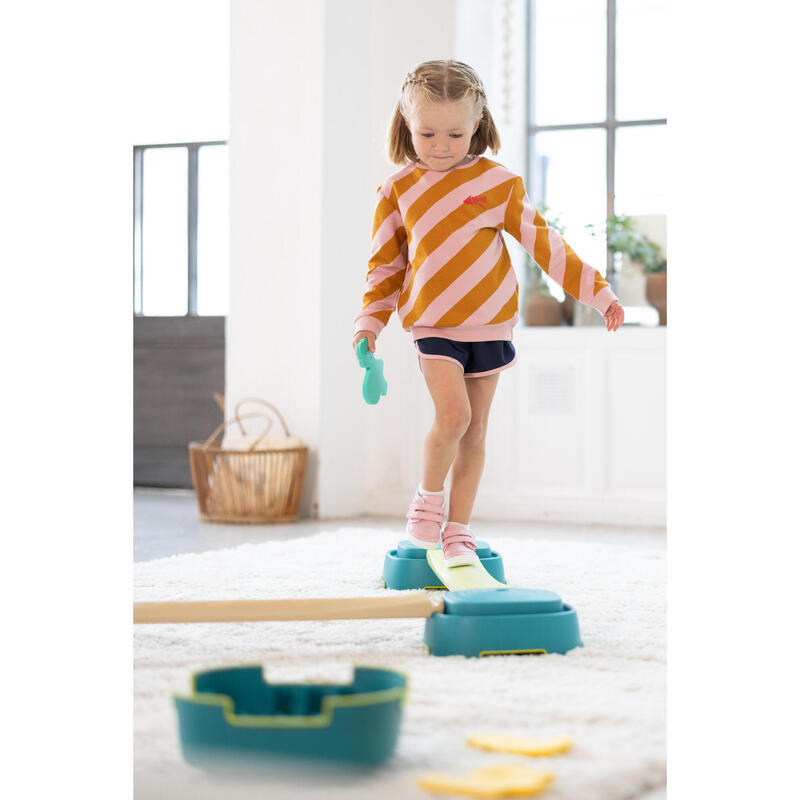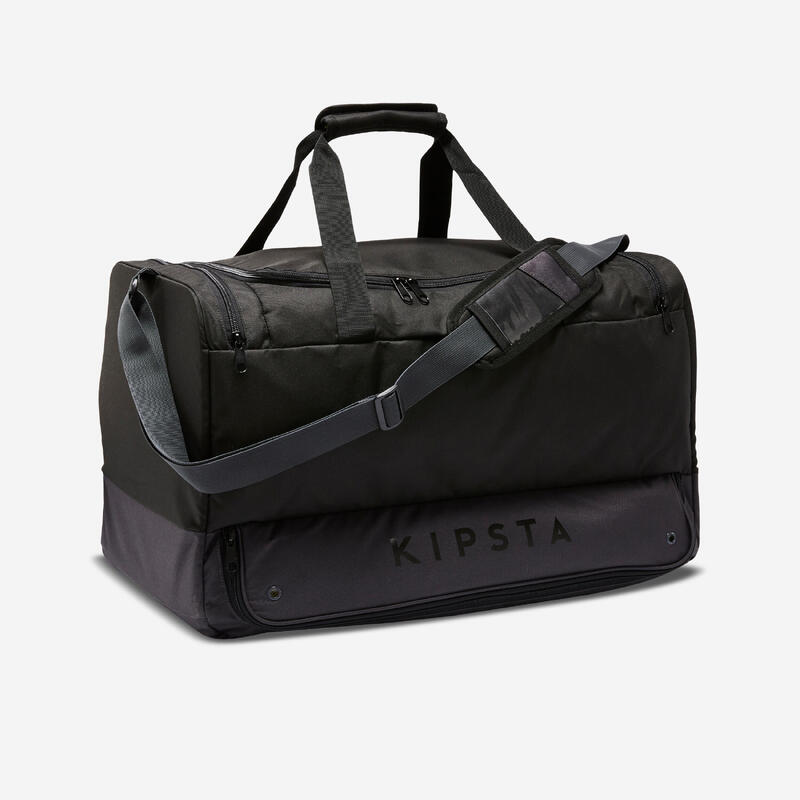Kid-tested, pro-approved
"To ensure the effectiveness of the balance kit, we carried out cross-tests on 18 children.
9 of them used the balance kit 2 times 20 minutes a week for 2 months, 9 did not. The result was clear: the measurement of the children's balance skills at the end of this test showed that all the children who had used the product for several weeks had developed their balance more than the others."
Imagining your own route
"With the balance kit, your child can give free rein to his imagination to build his own course and develop his imagination by inventing his own stories. He can start with the flat beams on the ground, to reassure himself. They can then move to higher beams, or even use their curved sides to increase instability. The little animals will enable him to create his own story: animals to step over, to catch." Annabel, Baby gym product engineer.
Technical information
Beam length: 700mm
Base dimensions: 270x270mm
Overall dimensions for square layout: 1200 x 1200 mm
Stages in the acquisition of dynamic balance
Before the age of 4, children must learn to direct their bodies in a given direction, gradually refining their skills by moving their 2 feet forward side by side.
By age 4, children can walk one foot in front of the other, alternating on a support at least a foot and a half wide.
By age 6, children are able to walk one foot in front of the other, heel to toe, on a support at least the width of their own foot.
Psychomotor development :
A child's psychomotor development has genetic, motor and psychological foundations.
A product can influence a child's psychomotor development if it has an effect on the motor domain.
This motor domain has several major components: body schema, dynamic coordination, balance, hand-eye coordination, fine motor skills and temporal and spatial structuring.
Body schema
The body schema is the child's representation of his or her own body, enabling him or her to master gestures more precisely, to perceive his or her own body and, more generally, to develop self-awareness. It is first built up from sensations and actions ("body felt, body acted"), before it can be represented and spoken of ("body represented", drawing of the bonhomme). The more children act, the more they refine their body schema, and the better they act in return.
Occulo-motor coordination
Oculo-manual coordination encompasses actions enabling the user to aim with all or part of
his or her body: for the youngest, following a trajectory, then aiming with large objects and
large targets, with hands, feet and then smaller and smaller targets, through to fine mastery of
digital dissociations: tapping, stringing beads, writing.
Temporo-spatial structuring
Temporo-spatial structuring includes everything to do with the child's bearings in time
(before/after, rhythmic activity, day/night, season, etc.) and space (in front/behind, over/under,
right/left, etc.).
User information
Do not store directly on the floor, but use a protective mat to avoid damaging the floor and protect your little ones from any waterfalls.








